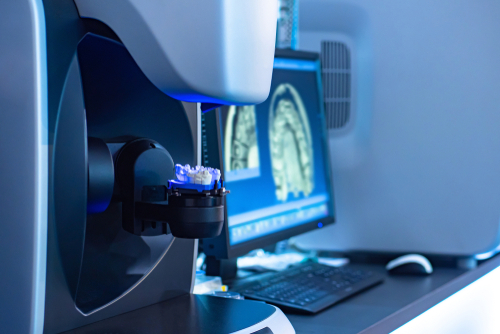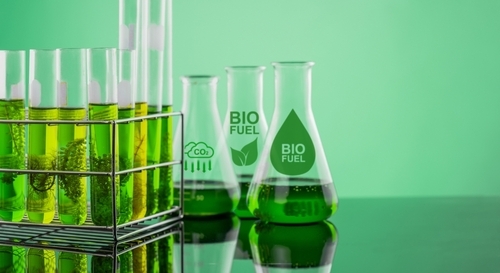R.E. Kearney's Blog, page 2
April 24, 2025
The Risks with MRI Scans
Magnetic Resonance Imaging (MRI) scans are invaluable tools in modern medicine, providing detailed images of the body’s interior to help diagnose a wide range of conditions. However, they are not without risks, particularly due to the use of contrast agents—commonly referred to as “dye”—and the potential impacts on patient health.
Contrast Agents: A Double-Edged Sword
To improve the clarity of MRI images, contrast agents like gadolinium-based compounds are often administered intravenously. While generally considered safe, gadolinium poses certain risks. For patients with impaired kidney function, gadolinium can lead to a rare but serious condition called nephrogenic systemic fibrosis (NSF). NSF causes thickening and hardening of the skin, as well as potential damage to internal organs, significantly impairing quality of life.

Moreover, recent studies have indicated that gadolinium may remain in the body long after the scan. Tiny deposits have been found in organs such as the brain, raising concerns about long-term effects. While the clinical implications of these deposits are not yet fully understood, researchers are investigating potential links to neurological symptoms, including headaches and cognitive changes.
Allergic Reactions and Toxicity
Contrast agents can also trigger allergic reactions in some patients, ranging from mild symptoms like rash and itching to severe cases involving difficulty breathing or anaphylaxis. Although these reactions are relatively rare, they represent a serious risk for individuals prone to allergies.
Additionally, gadolinium is toxic in its natural state and is only safe for medical use when bound to specific molecules. In certain cases, this bond can break down, especially in patients with compromised renal function, exposing them to toxic forms of gadolinium.

Physical Risks During the MRI Procedure
Beyond the contrast agent, the MRI procedure itself is not entirely without hazards. The powerful magnetic fields used in MRI can interact with metallic implants or devices inside the body, such as pacemakers or artificial joints. If precautions are not properly taken, this interaction can lead to malfunctioning of the devices or even physical harm.
Patients with claustrophobia may find the enclosed space of the MRI machine extremely distressing, potentially causing significant psychological discomfort. Sedatives are often required in such cases, introducing additional risks associated with medication.
Impact on Vulnerable Groups
Vulnerable groups, such as pregnant individuals, also face unique challenges. While MRI scans are generally considered safe during pregnancy, there is limited data on the effects of gadolinium exposure on the developing fetus. As a precaution, contrast-enhanced MRI is typically avoided during pregnancy unless absolutely necessary.
Balancing Benefits and Risks
Despite the potential risks associated with MRI scans, they remain a critical diagnostic tool that has revolutionized medicine. It is essential for healthcare providers to carefully assess the necessity of MRI scans and contrast agents, particularly for high-risk patients. By weighing the benefits against the risks and exploring safer alternatives, the medical community can ensure that these powerful tools continue to save lives without compromising patient safety.
April 10, 2025
The Glass Man of Pompeii
Pompeii, the ancient Roman city that met its tragic end in 79 CE due to Mount Vesuvius’s catastrophic eruption, continues to astonish scientists and historians with its eerie snapshots of life frozen in time. Among the thousands of victims whose remains were preserved by volcanic ash, one individual stands out due to a remarkable and almost otherworldly phenomenon: his brain matter turned to glass.
This discovery, made during excavations at the Collegium Augustalium—a building dedicated to the cult of Emperor Augustus—has become a scientific marvel. Researchers uncovered the remains of a man believed to be in his twenties, lying face-down on a wooden bed. His skull contained shiny, glassy fragments of material, initially mistaken for volcanic rock. Upon closer examination, the fragments were identified as vitrified brain tissue—a phenomenon so rare that it has captured the imagination of both the scientific community and the public.

The Science Behind Vitrification
Vitrification occurs when organic material is exposed to extreme heat and then rapidly cooled, transforming it into a glass-like substance. In the case of this Pompeian victim, the heat from Vesuvius’s eruption likely reached temperatures exceeding 500°C (932°F). Such intense heat would have instantly vaporized soft tissues and fluids. However, the subsequent cooling from volcanic ash and pumice might have solidified the residual brain matter into glass.
This process is remarkably rare, as conditions must align perfectly. The combination of instantaneous exposure to extreme heat and rapid cooling created the ideal circumstances for vitrification to occur. It also highlights the devastating force of Vesuvius’s eruption—a calamity capable of reshaping both landscapes and human remains in extraordinary ways.
The Implications for Science
The glassified brain matter offers invaluable insights into ancient disasters and preservation. By analyzing the vitrified fragments, scientists have been able to determine the victim’s exposure to extreme temperatures and the sequence of events during the eruption. Additionally, studying the chemical composition of the glassified tissue sheds light on cellular processes under extreme environmental conditions.
The discovery also invites broader discussions about the limits of human survival and the resilience of biological materials. It serves as a chilling reminder of the fragility of life in the face of natural catastrophes while deepening our understanding of how such events preserve history.
History is full of other fascinating cases of unusual preservation:
1. The Tollund Man: This is one of the most famous bog bodies, discovered in Denmark in 1950. The Tollund Man lived during the Iron Age, around 375–210 BCE, and his body was remarkably preserved in a peat bog. The acidic, oxygen-poor environment of the bog prevented decay, preserving his skin, facial features, and even the contents of his stomach.

2. The Ice Maiden of Siberia: Also known as the Ukok Princess, this mummy was found in the Altai Mountains of Siberia in 1993. She is believed to have lived around 2,500 years ago. Her body was preserved in permafrost, which kept her skin, tattoos, and burial garments intact.
3. The Franklin Expedition: The ill-fated Arctic expedition led by Sir John Franklin in 1845 resulted in the deaths of all crew members. Some bodies were discovered decades later, preserved in the permafrost. Autopsies revealed details about their diet and health, including evidence of lead poisoning from canned food.
4. Pompeii and Herculaneum: Beyond the vitrified brain tissue, the volcanic eruption of Mount Vesuvius in 79 CE preserved entire towns under layers of ash. Organic materials like bread, furniture, and even graffiti were frozen in time, offering a unique glimpse into Roman life.
5. The Rosalia Lombardo Mummy: Known as the “Sleeping Beauty,” Rosalia Lombardo was a two-year-old girl who died in 1920. Her body was embalmed using a special technique, and she remains incredibly well-preserved in the Capuchin Catacombs of Palermo, Italy. Her lifelike appearance continues to intrigue visitors.
6. The Ötzi Iceman: Discovered in the Alps in 1991, Ötzi is a 5,300-year-old mummy preserved in ice. His body, clothing, and tools provide invaluable insights into Copper Age life. Scientists have even reconstructed his last meal and the injuries he sustained before his death.
These cases highlight the diverse ways in which natural and artificial conditions can preserve human remains and artifacts. Each discovery offers a unique window into the past, enriching our understanding of history and human life.
March 27, 2025
Declining Intelligence
Recent studies have sparked a thought-provoking discussion about the potential decline in human intelligence. While intelligence is a complex and multifaceted concept, researchers have observed trends that suggest a decrease in certain cognitive abilities, such as problem-solving, reasoning, and attention spans, across various age groups.
Evidence of Decline
One of the key indicators of this trend comes from benchmarking tests like the Programme for International Student Assessment (PISA), which evaluates the educational skills of 15-year-olds worldwide. These assessments have shown a consistent decline in critical thinking and numeracy skills over the past decade. Similarly, the University of Michigan’s “Monitoring the Future” study has documented increasing difficulties in concentration among young adults. Notably, these declines predate the COVID-19 pandemic, suggesting that the issue is rooted in deeper societal and environmental factors.

Possible Causes
Several theories attempt to explain why human intelligence might be on the downturn:
1. Digital Overload: The pervasive use of digital devices and social media has been linked to shorter attention spans and reduced verbal functioning, particularly in children. The constant barrage of information can make it harder for individuals to focus and retain knowledge.
2. Decline in Reading Habits: Reading, a critical activity for cognitive development, has seen a significant drop in popularity. For instance, a 2022 study found that only 37.6% of Americans had read a novel or short story in the previous year, down from 45.2% in 2012. This shift away from deep, reflective reading to more superficial forms of media consumption may be impacting cognitive skills.
3. Educational Challenges: Changes in educational systems and curricula, coupled with disparities in access to quality education, have also been cited as contributing factors. The pandemic further exacerbated these issues, disrupting learning for millions of students worldwide.
4. Environmental and Lifestyle Factors: Some researchers point to environmental influences, such as exposure to pollutants, poor nutrition, and sedentary lifestyles, as potential contributors to cognitive decline.

Implications and Future Directions
The implications of declining intelligence are far-reaching, affecting everything from individual decision-making to societal progress. A less cognitively capable population could struggle with complex problem-solving, critical thinking, and innovation—skills that are essential in an increasingly interconnected and technologically advanced world.
However, it’s important to note that intelligence is not a fixed trait. Interventions such as promoting reading, encouraging critical thinking, and fostering healthier lifestyles could help mitigate these trends. Additionally, leveraging technology in ways that enhance rather than hinder cognitive abilities offers a promising avenue for addressing this challenge.
In conclusion, while the evidence of declining intelligence is concerning, it also presents an opportunity for reflection and action. By understanding the underlying causes and implementing targeted strategies, society can work towards reversing these trends and fostering a more intellectually robust future.
March 13, 2025
Potential new Epidemic in Congo
A mysterious and alarming disease has recently emerged in the northwest of the Democratic Republic of Congo (DRC), causing significant concern among health officials and the global community. The outbreak began on January 21, 2025, in the village of Boloko, after three children consumed a bat carcass and subsequently died within 48 hours. This new illness has since spread rapidly, resulting in 419 reported cases and 53 deaths as of late February.
The symptoms of this disease are particularly distressing, with affected individuals experiencing fever, vomiting, internal bleeding, and hemorrhagic fever-like symptoms. The rapid progression from the onset of symptoms to death, often within just 48 hours, has heightened the urgency of the situation. Health officials have ruled out common hemorrhagic fever diseases such as Ebola and Marburg, as well as other known illnesses like dengue and yellow fever.

The World Health Organization (WHO) has been closely monitoring the situation and has deployed experts to the affected areas to investigate the cause of the outbreak and implement measures to contain its spread. The WHO’s Africa office has emphasized the significant public health threat posed by this new illness, which has a fatality rate of approximately 12.3%. The rapid spread of the disease and the high number of deaths have raised concerns about the potential for a larger epidemic if not swiftly contained.
The origins of this outbreak echo the beginnings of the COVID-19 pandemic, which is believed to have jumped from bats to humans in China before spreading worldwide. The consumption of wild animals, such as bats, has long been a concern for public health officials due to the potential for zoonotic diseases to emerge and spread among human populations. The DRC has experienced a surge in such outbreaks over the past decade, with the number of zoonotic disease incidents increasing by more than 60%.
In addition to the current outbreak, the DRC has been grappling with other public health challenges, including a major outbreak of Mpox (formerly known as monkeypox) and a previous outbreak of acute respiratory infections complicated by malaria. The country’s weak healthcare infrastructure and ongoing political instability further exacerbate the difficulties in managing and containing these outbreaks.

Despite the alarming nature of this new disease, health officials are working diligently to reassure the public that it is unlikely to trigger the next global pandemic. University of Southampton senior research fellow Michael Head has noted that while genuinely new illnesses can emerge, they are relatively rare, and most outbreaks are brought under control relatively quickly. However, the high number of cases and deaths in this instance is concerning and underscores the need for immediate and coordinated efforts to contain the outbreak.
As the investigation continues, it is crucial for the global community to remain vigilant and support efforts to identify the cause of this new disease and prevent its further spread. The situation in the DRC serves as a stark reminder of the importance of robust public health systems and the need for ongoing research and preparedness to address emerging infectious diseases. By working together, we can help mitigate the impact of such outbreaks and protect the health and well-being of communities worldwide.
February 27, 2025
Switching off the internet
In an era where smartphones have become an extension of ourselves, recent studies have shown that blocking internet access on these devices can significantly improve mental health, well-being, and cognitive functioning. This revelation comes from a series of controlled experiments that aimed to understand the impact of constant online connectivity on our psychological state.
One such study, conducted by researchers from various universities, including the University of Texas at Austin and the University of Alberta, involved a month-long randomized controlled trial with 467 participants. The participants were asked to install an app on their smartphones that blocked all internet access, including browsers and social media, while still allowing calls and text messages. The study found that blocking mobile internet for just two weeks led to significant improvements in mental health, subjective well-being, and sustained attention.

The researchers discovered that participants who blocked internet access on their smartphones spent more time engaging in offline activities such as socializing in person, exercising, and being in nature. These activities contributed to the improvements in their psychological functioning. The study also found that the positive effects of blocking internet access persisted even after participants regained access to the internet, suggesting long-lasting benefits.
One of the most striking findings of the study was the improvement in sustained attention. Participants who blocked internet access showed an increase in their ability to focus, equivalent to erasing a decade of age-related cognitive decline. This improvement in attention span is particularly significant in a world where distractions are just a tap away.
The study also highlighted the impact of blocking internet access on mental health. Participants reported a reduction in symptoms of depression, with the improvement being larger than the average effect of pharmaceutical antidepressants. This finding suggests that reducing constant online connectivity can be a powerful tool in managing mental health.

Moreover, the study found that blocking internet access led to an increase in subjective well-being, including life satisfaction. Participants reported feeling happier and more content with their lives when they were not constantly connected to the online world. This increase in well-being can be attributed to the increased time spent in meaningful offline activities and the decreased time spent consuming media.
The implications of these findings are profound. In a world where smartphones have become ubiquitous, and constant online connectivity is the norm, taking a break from the internet can have significant benefits for our mental health and cognitive functioning. The study suggests that we are not adapted to deal with constant connection to everything all the time, and that reducing our online presence can lead to a more balanced and fulfilling life.
As we continue to navigate the digital age, it is essential to find ways to manage our online presence and prioritize our mental health.
February 13, 2025
Growing Living Teeth in the Laboratory
Recent advancements in dental science have brought us closer to a future where losing a tooth might not mean a permanent gap in your smile. Scientists at Tufts University have successfully grown human-like replacement teeth in a laboratory setting and implanted them into the mouths of miniature pigs. This groundbreaking research could pave the way for bioengineered teeth that could one day replace lost or damaged teeth in humans.
The research team, led by Pamela Yelick, combined human and porcine tooth cells and grew them into tooth-like structures inside samples of pig teeth. This approach was chosen because pigs grow multiple sets of teeth throughout their lifetime, making them an ideal model for this type of research. Once the teeth were mostly grown, they were implanted into the jaws of pigs for two months before being removed for analysis.

The results were promising: the lab-grown teeth developed hard layers of dentin and cementum, which are essential components of natural teeth. Although the teeth were not yet “beautifully formed,” the researchers are optimistic about the potential of this technology to create functional biological tooth substitutes.
One of the main advantages of bioengineered teeth over traditional dental implants is their ability to integrate with the jawbone more naturally. Dental implants, typically made of titanium, can sometimes lead to bone resorption over time and implant failure due to the direct transmission of chewing forces to the jawbone. In contrast, natural teeth are tethered to the jawbone via periodontal ligament tissues, which absorb and modulate these forces, promoting healthy bone maintenance.
The Tufts study also highlights the limitations of using human embryonic tissues for tooth regeneration, as they are difficult to obtain and not viable for regenerative medicine applications. Bioengineered tooth replacements grown in a lab offer a promising alternative.

While the research is still in its early stages, the potential benefits are significant. Bioengineered teeth could provide a more natural and long-lasting solution for tooth replacement, reducing the need for synthetic implants and the associated risks of infection and bone loss. The researchers hope that one day, this technology will be available to patients who need tooth replacement, offering a more effective and biologically compatible option.
As the field of dental science continues to evolve, the possibility of growing living teeth in the laboratory represents a significant step forward. With continued research and development, we may soon see a future where tooth loss is no longer a permanent problem, but a treatable condition with natural, bioengineered solutions.
January 30, 2025
Artificial Sun
China’s Experimental Advanced Superconducting Tokamak (EAST), often referred to as the “artificial sun,” is a groundbreaking nuclear fusion reactor that has recently set a new world record by sustaining plasma for 1,066 seconds. This achievement marks a significant milestone in the quest for clean, limitless energy.

Nuclear fusion, the process that powers the sun, involves fusing two light atomic nuclei to form a heavier nucleus, releasing substantial energy in the process. Unlike nuclear fission, which splits heavy atomic nuclei and is currently used in nuclear power plants, fusion produces minimal radioactive waste and carries a lower risk of catastrophic accidents. The EAST reactor, located in Hefei, China, aims to replicate these stellar conditions by confining hot plasma within a doughnut-shaped chamber using powerful magnetic fields.
The recent milestone achieved by EAST on January 20, 2025, surpasses the previous record of 403 seconds set earlier in 2023. The reactor operated at temperatures exceeding 100 million degrees Celsius, seven times hotter than the sun’s core. This accomplishment demonstrates the reactor’s enhanced stability and efficiency in maintaining the extreme conditions necessary for nuclear fusion.
Sustaining plasma for over 17 minutes is a critical advancement in fusion research, bringing scientists closer to the goal of continuous, self-sustaining fusion reactions essential for practical power generation. The success of EAST indicates progress in understanding plasma behavior and improving reactor components, paving the way for future fusion power plants.
Nuclear fusion holds the promise of providing a nearly inexhaustible and environmentally friendly energy source. Unlike fossil fuels, fusion does not produce greenhouse gas emissions, making it a potential solution to combat climate change. The ultimate goal of an artificial sun is to create nuclear fusion like the sun, providing humanity with an endless, clean energy source.
China’s progress with EAST positions it as a leader in the global pursuit of fusion energy. The ability to maintain stable plasma conditions for extended periods is a vital step toward developing fusion reactors capable of providing a continuous power supply. This achievement not only showcases China’s growing capabilities in advanced scientific research but also contributes significantly to international efforts aimed at harnessing fusion energy as a sustainable and clean power source.

Despite this remarkable progress, several challenges remain before fusion energy can become a practical reality. Developing materials that can withstand prolonged exposure to the extreme temperatures and radiation within fusion reactors is crucial. Additionally, achieving a net positive energy output, where the energy produced by fusion exceeds the energy input required to sustain the reaction, remains a significant hurdle.
Future prospects for fusion energy are promising, with ongoing research and collaboration among global scientists. The recent success of EAST provides valuable insights for future fusion projects, including the International Thermonuclear Experimental Reactor (ITER) under construction in France. Lessons learned from EAST’s experiments will inform the design and operation of next-generation fusion reactors.
In conclusion, China’s “artificial sun” reactor represents a significant step forward in the quest for clean, limitless energy. The recent achievement of sustaining plasma for 1,066 seconds at temperatures exceeding 100 million degrees Celsius demonstrates the potential of nuclear fusion to revolutionize the global energy landscape. While challenges remain, the progress made by EAST brings us closer to a future where fusion power plants provide a sustainable and environmentally friendly energy source for all.
January 16, 2025
The Dangers of Perfume
Perfumes are a staple in many people’s daily routines, adding a pleasant scent to our clothes, bodies, and living spaces. However, the chemicals in perfumes can pose significant health risks, especially from prolonged exposure.
Short-Term Health Effects
Inhaling perfume can lead to immediate symptoms, particularly for individuals with allergies or sensitivities. Common short-term effects include respiratory issues, particularly in those with asthma, skin reactions, headaches and migraines, and eye irritation.

Long-Term Health Effects
Much more worrying are the potential long-term effects caused by Phthalates, a group of chemicals commonly used in perfumes to enhance fragrance longevity and stability. While they serve these purposes well, their presence has raised significant health concerns. Here are some of the dangers associated with phthalates in perfumes:
– Endocrine Disruption
Phthalates are known to disrupt the endocrine system, which regulates hormones in the body. They can mimic or interfere with hormones, leading to imbalances of various bodily functions. This disruption can have serious long-term effects on health, including reproductive and developmental issues.
– Developmental and Behavioral Concerns
Exposure to phthalates, especially during critical periods of development such as pregnancy and early childhood, has been linked to developmental and behavioral problems. Studies have shown that children exposed to phthalates may experience learning difficulties, lower IQ, and behavioral disorders. Prenatal exposure to phthalates can also affect the development of the male reproductive system.

– Respiratory Issues
Inhaling phthalates from perfumes can lead to respiratory problems, particularly for individuals with pre-existing conditions like asthma. The chemicals can cause irritation of the airways, leading to symptoms such as coughing, wheezing, and shortness of breath.
– Cardiovascular and Metabolic Effects
Some research suggests that long-term exposure to phthalates may be associated with cardiovascular issues and metabolic disorders. Phthalates have been linked to insulin resistance, which can increase the risk of diabetes, as well as other cardiovascular problems.
– Cancer Risk
While the evidence is still emerging, some studies have suggested a potential link between phthalate exposure and certain types of cancer. The long-term effects of these chemicals on human health are subject to ongoing research, but the possibility of increased cancer risk is a significant concern.
Minimizing Exposure
To reduce the risks associated with phthalates, consider using phthalate-free personal care products. Look for products labeled as “fragrance-free” or “phthalate-free.” Additionally, be mindful of the products you use and try to limit your exposure to synthetic fragrances.
Conclusion
While phthalates enhance the performance of perfumes, their potential health risks cannot be ignored. By making informed choices and opting for safer alternatives, you can enjoy pleasant scents without compromising your health. It’s essential to stay informed about the ingredients in personal care products and take steps to minimize exposure to harmful chemicals.
December 26, 2024
What is “Mirror Life?”
It was recently reported that a group of scientists called for the immediate stop to research into something called Mirror Life, because of the terrifying risks it could potentially pose for our future existence. But, what is Mirror Life? The concept of “mirror life” is a fascinating exploration into the possibilities of existence and consciousness beyond our conventional understanding. Mirror life, or mirror matter, hypothesizes the existence of a parallel form of matter that is a mirror image of the ordinary matter we know. This idea stems from attempts to explain certain physical phenomena and has intriguing implications for physics, cosmology, and even the search for extraterrestrial life.
Origins of the Concept
The notion of mirror life is rooted in the symmetries observed in particle physics. In the 1950s, physicists Tsung-Dao Lee and Chen-Ning Yang proposed the idea that parity, or mirror symmetry, might not be conserved in weak interactions. This was later confirmed in experiments, leading to a deeper investigation into the role of symmetry in the universe. The idea of mirror matter arises from the possibility that for every particle in our universe, there might be a corresponding mirror particle that interacts primarily with other mirror particles.

Mirror Matter and Dark Matter
One of the most intriguing aspects of mirror matter is its potential connection to dark matter, which is thought to make up about 27% of the universe’s mass-energy content. Dark matter does not interact with electromagnetic forces, meaning it doesn’t emit, absorb, or reflect light, making it invisible and detectable only through its gravitational effects. Mirror matter could be a candidate for dark matter, as it would similarly interact weakly with ordinary matter and might only be detectable through gravitational interactions.
Implications for Life
The concept of mirror life takes the idea of mirror matter a step further by speculating about the possibility of life forms made entirely of mirror matter. Just as ordinary matter forms the building blocks of life on Earth, mirror matter could theoretically form the building blocks of mirror life. These life forms would exist in a mirror universe or parallel dimension, fundamentally similar yet entirely separate from our own.
Mirror life could have its own biology, chemistry, and even consciousness, but it would be undetectable to us due to its weak interaction with ordinary matter. This idea stretches the boundaries of our understanding of life and challenges the notion that our universe is the only possible cradle for living organisms.
The concept of mirror life, while fascinating, is largely hypothetical and speculative. However, if we entertain the idea of mirror matter and mirror life, there are a few theoretical scenarios where interactions between mirror matter and ordinary matter could have destructive consequences for life on Earth.

Annihilation Events
One of the primary concerns is the potential for matter-antimatter-like annihilation events. If mirror matter and ordinary matter were to come into direct contact, they might annihilate each other, releasing a tremendous amount of energy. This kind of interaction could be catastrophic, akin to antimatter colliding with matter. In a worst-case scenario, if large quantities of mirror matter were introduced into Earth’s environment, it could lead to significant explosions and energy releases.
Gravitational Disruptions
Another hypothetical risk is the gravitational influence of mirror matter. While mirror matter is expected to interact very weakly with ordinary matter, its gravitational effects could still be significant. If substantial amounts of mirror matter were to accumulate in the vicinity of Earth, they could potentially disrupt orbital dynamics, leading to changes in Earth’s orbit or the orbits of other celestial bodies. Such gravitational disturbances could have profound impacts on the stability of Earth’s environment.
Ecological Impact
If mirror life forms were to somehow interact with Earth’s biosphere, there could be unpredictable ecological consequences. Mirror life forms might compete with ordinary life forms for resources or introduce new forms of disease. However, given the hypothetical nature of mirror life and its expected weak interaction with ordinary matter, this scenario seems less plausible.
Conclusion
The idea that mirror life could destroy life on Earth is rooted in speculative science and theoretical physics. While it provides an intriguing topic for scientific inquiry and science fiction, there is no concrete evidence to suggest that such interactions are possible or likely. Theoretical explorations of mirror matter and mirror life continue to expand our understanding of the universe, but for now, they remain within the realm of speculation rather than imminent danger.
December 12, 2024
Seaweed Biofuel
As the world grapples with climate change and the depletion of fossil fuels, the search for alternative and sustainable energy sources has intensified. Among the various renewable energy options, one of the more unconventional yet promising candidates is seaweed. This versatile marine plant could play a significant role in powering cars and reducing our reliance on traditional fuels.
The Science Behind Seaweed Biofuel
Seaweed, or macroalgae, is abundant in the world’s oceans and has a high growth rate, making it a sustainable resource. Unlike land-based biofuel crops, seaweed doesn’t compete with food production or require freshwater and arable land. This characteristic alone makes it an attractive option for large-scale biofuel production.

The process of converting seaweed into biofuel involves several steps. First, the seaweed is harvested and dried. Next, it undergoes a process called hydrothermal liquefaction, where it is subjected to high temperatures and pressure in the presence of water. This process breaks down the seaweed’s complex organic molecules into a crude oil-like substance known as bio-crude. The bio-crude can then be refined into various types of fuels, including biodiesel and bioethanol, which can be used to power cars.
Environmental Benefits
Using seaweed as a fuel source offers several environmental advantages. Seaweed absorbs carbon dioxide during its growth, helping to offset the greenhouse gas emissions produced during its conversion to biofuel. This carbon-neutral cycle can significantly reduce the overall carbon footprint of biofuel compared to fossil fuels.
Moreover, seaweed cultivation can contribute to ocean health. Seaweed farms provide habitat for marine life and help to absorb excess nutrients from the water, which can reduce harmful algal blooms and improve water quality. Additionally, since seaweed doesn’t require fertilizers or pesticides, it avoids many of the negative environmental impacts associated with land-based biofuel crops.
Economic and Social Impact
The development of seaweed-based biofuels also has the potential to stimulate economic growth, particularly in coastal communities. Seaweed farming can create jobs and provide new income streams for people living in these areas. Furthermore, investing in the infrastructure needed for seaweed cultivation and biofuel production can lead to technological advancements and increased energy security.

Challenges and Future Prospects
Despite its potential, several challenges must be overcome before seaweed biofuel can become a mainstream energy source. One significant hurdle is the cost of production. Currently, the technology and processes required to convert seaweed into biofuel are expensive, making it less competitive with traditional fuels. Research and development are ongoing to improve efficiency and reduce costs.
Another challenge is scaling up production. Large-scale seaweed farming requires careful management to avoid ecological disruptions and ensure sustainability. Regulatory frameworks and industry standards will need to be established to support the growth of this new sector.
Conclusion
Seaweed-based biofuel represents an exciting frontier in the quest for sustainable and renewable energy sources. While there are challenges to be addressed, the environmental, economic, and social benefits make it a promising alternative to traditional fossil fuels. With continued research, investment, and innovation, seaweed could one day power our cars and contribute to a greener, more sustainable future.



